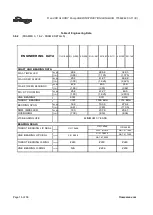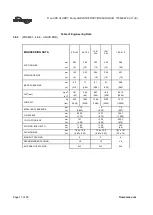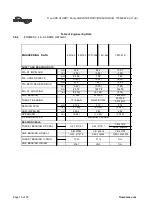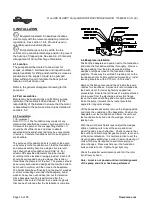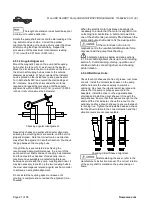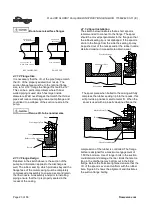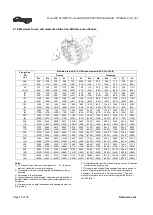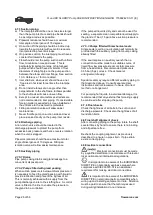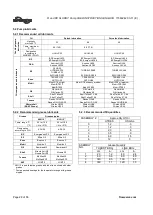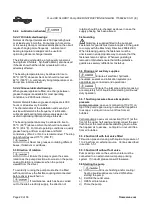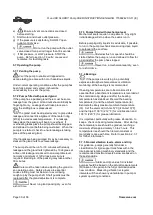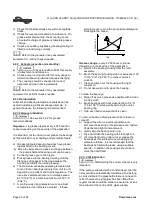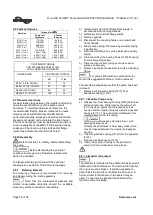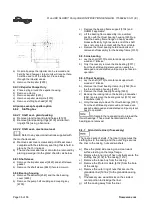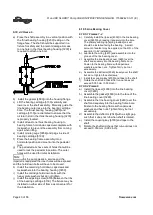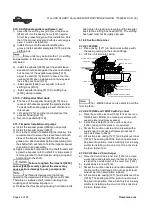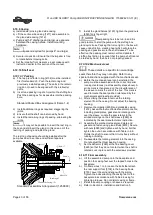
R and RX SLURRY Pump USER INSTRUCTIONS ENGLISH
71569242 03-11 (E)
Page 29 of 56
flowserve.com
®
5.2.4 Lubrication schedule
5.2.4.1 Oil lubricated bearings
Normal oil change intervals are 4 000 operating hours
or at least every 6 months. For pumps on hot service
or in severely damp or corrosive atmosphere, the oil will
require changing more frequently. Lubricant and
bearing temperature analysis can be useful in
optimizing lubricant change intervals.
The lubricating oil should be a high quality mineral oil
having foam inhibitors. Synthetic oils may also be used
if checks show that the rubber oil seals will not be
adversely affected.
The bearing temperature may be allowed to rise to
50 ºC (90 ºF).above ambient, but should not exceed
82 ºC (180 ºF). A continuously rising temperature or an
abrupt rise, indicate a fault.
5.2.4.2 Grease lubricated bearings
When grease nipples are fitted, one charge between
grease changes is advisable for most operating
conditions, ie 2 000 hours interval.
Normal intervals between grease changes are 4 000
hours or at least every 6 months.
The characteristics of the installation and severity of
service will determine the frequency of lubrication.
Lubricant and bearing temperature analysis can be
useful in optimising lubricant change intervals.
The bearing temperature may be allowed to rise to
55 ºC (99 ºF) above ambient but should not exceed
95
C (204
F). For most operating conditions a quality
grease having a lithium soap base and NLGI
consistency of No 2 or No 3 is recommended. The drop
point should exceed 175 ºC (350 ºF).
Never mix greases containing different
bases, thickeners or additives.
5.3 Direction of rotation
Ensure the pump is given the same
rotation as the pump direction arrow cast on the pump
casing. Rotation is clockwise when the pump is
viewed from the driver.
To avoid dry running the pump must either be filled
with liquid or have the flexible coupling disconnected
before driver is switched on.
If maintenance work has been carried
out to the site's electricity supply, the direction of
rotation should be re-checked as above in case the
supply phasing has been altered.
5.4 Guarding
Guarding is supplied fitted to the pump set.
Fasteners for guards must remain captive in the guard
to comply with the Machinery Directive 2006/42/EC.
When releasing guards, the fasteners must be
unscrewed in an appropriate way to ensure that the
fasteners remain captive. Whenever guarding is
removed or disturbed ensure that all the protective
guards are securely refitted prior to start-up
5.5 Priming and auxiliary supplies
Ensure all electrical, hydraulic,
pneumatic, sealant and lubrication systems (as
applicable) are connected and operational.
Ensure the inlet pipe and pump casing
are completely full of liquid before starting continuous
duty operation.
5.5.1 Suction pressure above atmospheric
pressure
Horizontal pumps: open vent connection [102.11] on
top of the pump upper casing to allow the trapped air
to escape. Let liquid run out until free from air
bubbles.
Vertical pumps: open vent connection [102.11] at the
front of the upper half casing and disconnect the seal
flush line at the mechanical seal/stuffing box to allow
the trapped air to escape. Let liquid run out until free
from air bubbles.
5.5.2 Suction lift with foot valve fitted
Fill suction pipe and casing with liquid at a pressure of
1 to 2 bar from an external source. Vent as described
in section 5.5.1.
5.5.3 Suction lift without foot valve
Pump casing vents on the suction volute must be
connected to an external vacuum pump priming
system. If in doubt please consult Flowserve.
5.6 Starting the pump
a)
Ensure flushing and/or cooling/
heating liquid supplies are turned ON before
starting the pump.
b) CLOSE the outlet valve.
c) OPEN all inlet valves.
d) Prime the pump.


